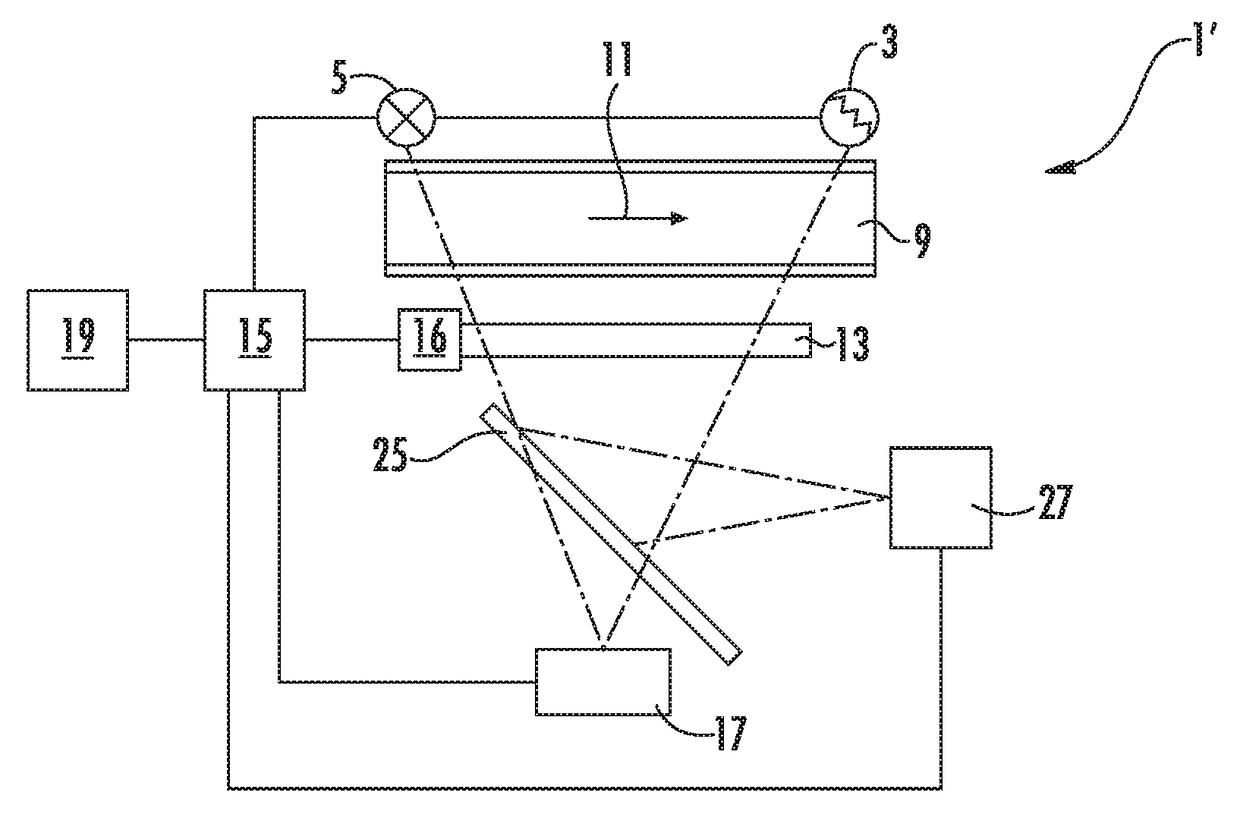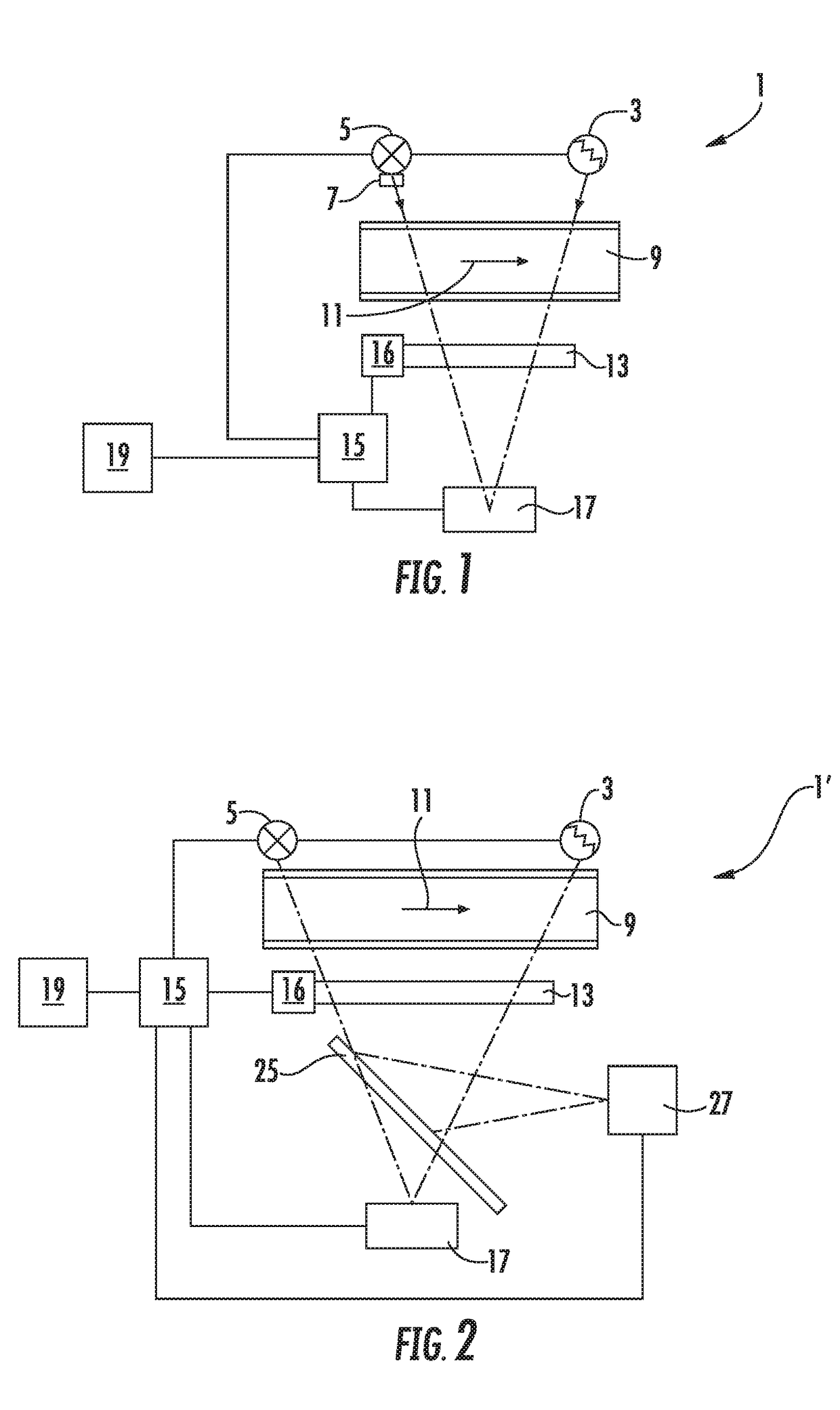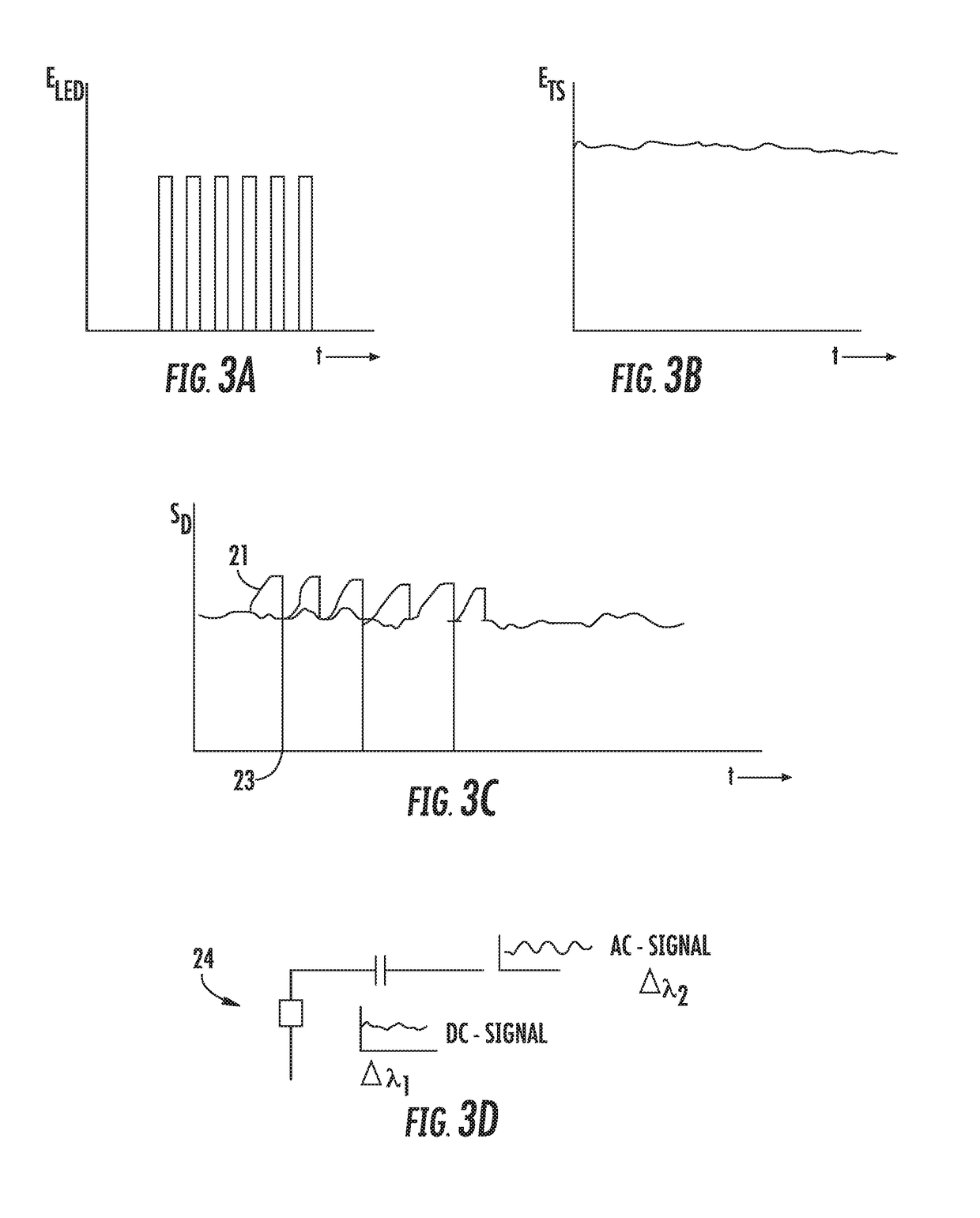Method for signal detection in a gas analysis system
a gas analysis and signal detection technology, applied in the direction of interferometric spectrometry, optical radiation measurement, instruments, etc., can solve the problems of difficult detection of short changes in the concentration of gas to be analysed, reliable calibration, etc., and achieve the effect of short time constan
- Summary
- Abstract
- Description
- Claims
- Application Information
AI Technical Summary
Benefits of technology
Problems solved by technology
Method used
Image
Examples
Embodiment Construction
[0050]Referring to the drawings, a first preferred exemplary embodiment of a gas analysis system for carrying out the method according to the present invention shown in FIG. 1 has a first thermal radiation source 3 as well as a second radiation source 5, configured as an LED. In this exemplary embodiment the first radiation source 3 emits radiation in a first wavelength range Δλ1 between 3.5 μm and 12 μm. The second radiation source 5, which has its characteristic emission spectrum in a second wavelength range Δλ2 of 2 μm to 6 μm, is, in addition, equipped with a collimation optics 7 in this preferred exemplary embodiment, so that the radiation emitted by the second radiation source 5 is radiated out in only one direction. It is, however, radiation sources with other emission wavelengths may also be used.
[0051]The gas analysis system 1 has a gas measuring section in the form of a measuring cuvette 9, through which the gas to be measured and to be analyzed can flow along a flow direc...
PUM
| Property | Measurement | Unit |
|---|---|---|
| wavelength range | aaaaa | aaaaa |
| wavelength range | aaaaa | aaaaa |
| wavelength range | aaaaa | aaaaa |
Abstract
Description
Claims
Application Information
 Login to View More
Login to View More - R&D
- Intellectual Property
- Life Sciences
- Materials
- Tech Scout
- Unparalleled Data Quality
- Higher Quality Content
- 60% Fewer Hallucinations
Browse by: Latest US Patents, China's latest patents, Technical Efficacy Thesaurus, Application Domain, Technology Topic, Popular Technical Reports.
© 2025 PatSnap. All rights reserved.Legal|Privacy policy|Modern Slavery Act Transparency Statement|Sitemap|About US| Contact US: help@patsnap.com



